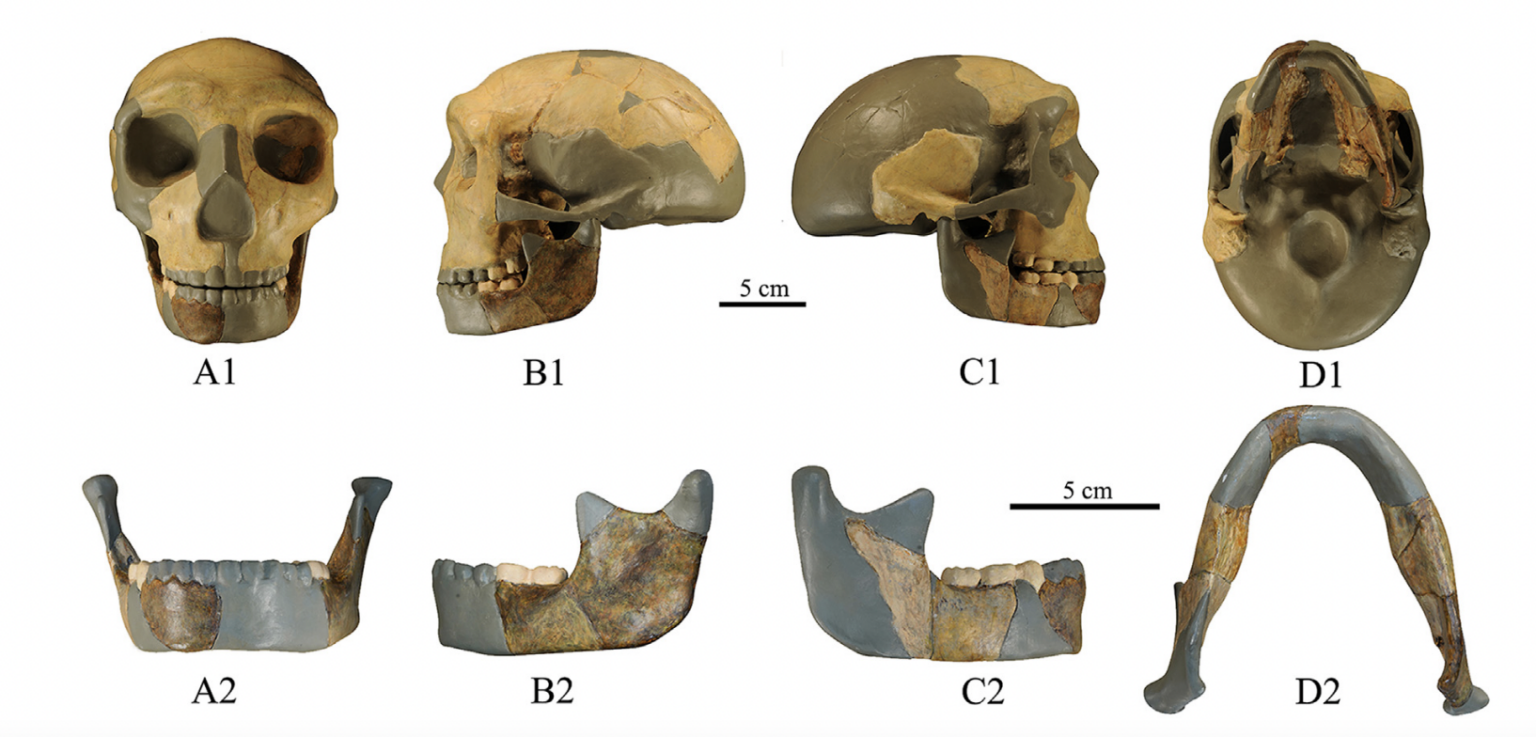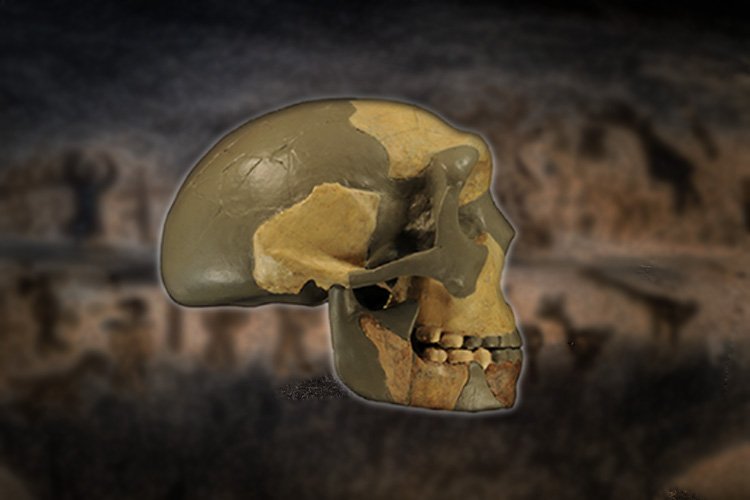In a breakthrough discovery, an international team of scientists believes they have discovered fossilized hominid remains, dubbed HLD 6, which represent a new branch on the family tree of human evolution.
Publishing their findings in the Journal of Human Evolution, researchers from the Chinese Academy of Sciences, Xi’an Jiaotong University, the University of York in the UK, and Spain’s National Research Center on Human Evolution, say the fossilized remains of a 300,000-year-old hominin could rewrite our understanding of human lineage and the journey to modern humanity.
In 2019, researchers first unearthed a partial skull, jawbone, and leg bones of the mysterious hominin in Hualongdong, eastern China. Since then, the remains labeled as HLD 6 have puzzled scientists due to their unique physical traits that don’t appear to match any recognized human lineage.


The fossil’s jawbone exhibits a unique triangular shape and bend, closely mirroring modern humans and Late Pleistocene hominids, which diverged from Homo erectus nearly 750,000 years ago. However, HLD 6 lacks a chin, a feature more akin to the Denisovan species, an ancient hominin group that split from Neanderthals roughly 400,000 years ago.
Researchers now believe the remains represent a possible hybrid between the hominin branch that led to modern humans and the branch that bore other ancient hominins in the region, like Denisovans.
The historical understanding of hominin fossils from the Pleistocene era in China has often painted them as mere variations en route to the modern human. Many have been deemed primitive versions of Homo sapiens or, alternatively, were considered a form of Homo erectus.
However, HLD 6 does not resemble the Homo erectus species, which survived in Indonesia until about 100,000 years ago. Instead, the remains exhibit characteristics consistent with more recent hominin lineages.
Past genomic studies on Neanderthal remains unearthed in Europe and western Asia have hinted at a fourth lineage of hominins during the Middle to Late Pleistocene, but concrete evidence has remained elusive until now. Researchers believe these new findings may finally put a face to this missing piece of our evolutionary history.
The fossilized remains belong to a youth believed to have lived to be approximately 12 or 13 years old. Researchers initially considered that the modern-human facial structure, mixed with the primitive traits exhibited by the skull cap and limbs, could have been caused by HLD 6’s young age.
However, after comparing the remains with adult and immature specimens, results indicated the hominin’s age could not explain its contrasting physical characteristics.
Researchers say these intriguing findings suggest that Asia once was home to three coexisting lineages: H. erectus, Denisovan, and this newly discovered hominid that is “phylogenetically close” to modern humans.
While Homo sapiens marked their presence in China approximately 120,000 years ago, this recent discovery suggests that specific “modern” attributes had taken root much earlier.
Validating what place HLD 6 represents amidst Homo Sapiens and Neanderthals will require further research. Nevertheless, the discovery underscores the ever-evolving nature of our understanding of human ancestry and reminds us that the road to deciphering our past is paved with surprises, and the story of human evolution is far from complete.
Tim McMillan is a retired law enforcement executive, investigative reporter and co-founder of The Debrief. His writing typically focuses on defense, national security, the Intelligence Community and topics related to psychology. You can follow Tim on Twitter: @LtTimMcMillan. Tim can be reached by email: tim@thedebrief.org or through encrypted email: LtTimMcMillan@protonmail.com

